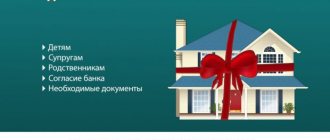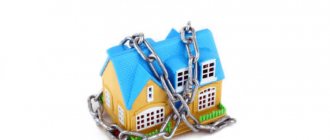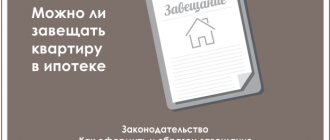What it is?
A residential mortgage note is a security backed by a mortgage. It serves to confirm the transfer of the purchased property as collateral. This means that under some circumstances the bank can use the mortgage and receive a share of the profit.
This document can be issued for the following types of objects:
- An apartment in a multi-storey building on the secondary or primary market.
- Private house, townhouse, cottage;
- Suburban area;
- A plot of land with or without buildings;
- Commercial real estate;
- Other types of real estate.
Recovery
What to do if the mortgage is lost?
The mortgagor himself can draw up a duplicate of the mortgage and formalize it, or he can shift this task to the shoulders of the bank. In this case, the borrower will only have to sign the necessary papers, and the mortgage will be restored. But such a situation carries certain risks. Of course, according to the law, it is impossible to make changes to the terms of the mortgage after the conclusion of the contract, and no one with a mortgage will most likely even try to do this. But the loss of the document makes it possible for dishonest financial organizations to “unnoticeably” make changes to the duplicate mortgage note, pretending that this is how everything happened. Therefore, when restoring a mortgage after its loss, it would be a good idea to seek the help of a lawyer before signing a duplicate document.
If you require free legal advice, you can order it directly on our website in a special form.
We are waiting for your questions. Subscribe to updates and support our project on social networks.
Why do you need a mortgage on an apartment?
Both the borrower and the bank need a mortgage on real estate. For the first category of persons, it serves as an opportunity to obtain favorable lending conditions. It does not provide any other benefits for the borrower.
A mortgage is much more important for banking institutions. For them, this document is a guarantee of the return of funds or the recovery of personal property of clients if they cannot fulfill the conditions specified in the contract. A credit institution has the right to sell or transfer a mortgage without asking the borrower’s permission, but simply notifying him about it. The security also serves to attract investment from outside - if the bank has the opportunity to make money on the transaction, then it can give the borrower more favorable lending conditions. Mortgages for banks are a significant financial portfolio, which they wisely use for their own purposes.
Procedure for removing encumbrances from property
When the borrower repays the mortgage in full, the bank loses its claim on the mortgage. The credit institution is obliged to promptly make an entry in the document confirming that the borrower has fulfilled its obligations to the bank. In addition to the recording, the document is sealed and signed by an authorized person. When the encumbrance is lifted, the former client of the bank will receive the mortgage in hand. Today in Russia, an experimental project has launched on the lending market - reverse mortgage. This loan is mainly for the elderly population. The client pledges his living space to the bank and receives a certain amount from the financial institution every month.
What does a mortgage look like?
In different banks, the type of mortgage may differ in color, size, and fonts. Only the information indicated on the form is uniform - they are approved by Federal Law No. 102 “On Mortgage”.
Example of a mortgage for an apartment
According to the rules, the document contains the following information:
- The name of the document and its identification number - the place where the mortgage note number is written can vary, but in most cases it is located in the header.
- Information about the banking institution - legal data, including checkpoint, tax identification number and other data.
- Information about the borrower - full name, date of birth, information from the passport.
- Number, date of registration and other information about the loan agreement.
- Credit data: term, monthly payment amount, interest rate, etc.
- Requirements from the bank for debt repayment.
- The collateral object and information about it: exact address, cadastral passport number, etc.
- The cost of the collateral (estimated by experts).
- Information about the rights of the mortgagor to the object.
- Signatures of all parties to the agreement, date of execution of the mortgage and loan agreement.
Before final signing, you should always check the data and compare it with the information specified in the loan agreement. If there are different data on loan repayment in the mortgage and loan agreement, priority is given to the information from the first document.
Design features
In Russia, when obtaining a mortgage, a mortgage is not a mandatory document, but the bank may offer to issue it as an additional guarantee. The registration procedure takes place simultaneously with the preparation of the loan agreement. And the points of these two documents should not contradict each other.
The mortgagor should carefully read the document, since any inaccuracy or typo in the collateral may cause a problem if a controversial situation arises. Because the mortgage has a priority position in relation to the agreement.
The collateral can be either a mortgaged apartment or other property with a value equal to the loan amount.
There is no single form of the document; each bank develops its own, but it is better to familiarize yourself with a sample document in advance.
Fulfillment of some requirements is a necessity
:
- detailed description of the collateral;
- entering information about the pledgor and pledgee;
- clarification of the method of debt repayment indicating the exact date;
- availability of data on the terms of the mortgage loan: amount, interest rate, terms, payment details;
- All property owners on the one hand and the official representative of Sberbank on the other hand participate in the signing.
The borrower who has executed a mortgage agreement does not have the right to carry out construction work in the apartment that serves as security for the mortgage without officially obtaining permission from the lender.
How to apply for a mortgage
This article describes the standard registration procedure. Please note that as of July 1, 2021, an electronic mortgage has been introduced. To complete it, you must fill out a special form on the Rosreestr website and certify the mortgage with the electronic signatures of the mortgagor, mortgagee and state registrar.
Step #1. Contacting the bank
The signing of a mortgage usually occurs immediately upon execution of a loan agreement. Formally, both parties are involved in its preparation, but in reality everything is filled out by a bank employee, and the client is only required to sign. To conclude an agreement, you should find out what documents need to be provided to the bank - the list of documents differs in different institutions. In general, the documents for creating a mortgage are the same as for registering a mortgage:
- Russian citizen passport . You need a passport of the person in whose name the mortgage is issued. Some banks require that the borrower have a permanent residence permit. You can do it immediately in the purchased apartment.
- Certificate of ownership or extract from the Unified State Register of Real Estate . This is necessary to prove ownership of the property being purchased.
- Property foundation documents. An example of such a document is an apartment purchase and sale agreement.
- Report on the assessment of the market value of real estate . In some banks, employees do this themselves, and in some they ask to contact independent appraisers. The report is required to confirm the market value of the home. The cost of such a procedure is from 2,500 to 6,000 rubles.
- Insurance of an apartment mortgaged in favor of a banking organization . This is a guarantee for the bank to receive the balance of the debt for housing if the collateral is lost, for example, in the event of a fire. If the borrower loses the property for reasons beyond his control, the insurance company will pay the required amount of money to the bank.
The combination of these documents is prescribed in the mortgage. The entire process of completing them does not take more than 30 minutes. Typically, the bank prepares the security in advance along with the loan agreement, and the client only has to sign and register.
The list of documents for registration of a mortgage and loan agreement differs depending on the specific situation, requirements from the bank, and laws in your region. There is no single standard list of documents suitable for every situation. Therefore, you should consult with a realtor or bank about the required list of documents before concluding a transaction.
Step #2. Payment of state duty
The mortgage must be registered simultaneously with the ownership of the property desired to be purchased with a mortgage. Registration of property rights is a paid procedure. Because of this, it is better to pay before registering the mortgage, so as not to visit Rosreestr once again.
Registration of property rights is subject to a fee in accordance with the Tax Code of the Russian Federation. The amount of the duty depends on the form of the person receiving the ownership right:
- For individuals (citizens) – 2,000 rubles .
- For legal entities (organizations) – 220,000 rubles .
Payment of the state fee is made at the Rosreestr cash desk, special terminals or at any banks. Be sure to save and take the receipts with you - if you do not have them, you will not be able to submit documents for subsequent registration.
In fact, you only need to pay for registering ownership. If you make a mortgage without purchasing real estate, that is, for an existing home, you do not need to pay any mortgage costs. The mortgage note is worth nothing. For example, you take out a mortgage for a new home and use your old property as collateral, that is, you make a mortgage on it. In this case, registering a mortgage will cost you free of charge.
Step #3. Registration
Depending on the type of real estate and the purpose of the site, the list of documents for registering a mortgage and ownership rights differs. In most cases, Rosreestr requires the following documents:
- Owner's passport. If the property has several owners (for example, in the case of an apartment being purchased by spouses), then passports of all persons are required. When purchasing real estate on the primary market, you must submit the developer’s documents - their representative will bring them. When buying an apartment on the secondary market, a seller is needed. If one of the future owners is a minor, then you should take his birth certificate and permission from the guardianship authorities.
- Documents confirming ownership. This includes a purchase and sale agreement with signatures, a mortgage issued by the bank, and an act of acceptance and transfer of housing.
- Proof of payment. You must bring the original payment receipt.
The completed package of documents should be submitted to Rosreestr; this can be done at any of its branches. If you are forced to go to the branch at the location of the collateral object, this is an illegal requirement. The department can refuse you only if not all documents have been collected or they are in an unsuitable form (dented or have corrections).
You can submit documents for registration of a mortgage and ownership rights using the MFC. MFC employees themselves send documents to Rosreestr, but the duration of the procedure will increase by several days.
- After accepting all the documents, the Rosreestr employee must issue you a receipt - one copy each for you and the bank.
- The receipt indicates a list of accepted documents, the date of issue of the certificate, as well as contact information. You can use them to find out how long it takes to issue an extract confirming ownership.
- Typically, these documents are processed within 5 business days.
Step #4. Obtaining a certificate
To complete this step, you must come to the Registry at the designated time. Next, provide the employee with a receipt, after which he will issue:
- For the borrower - an extract from the Unified State Register of Real Estate with confirmation of the encumbrance.
- The bank that issued a mortgage on real estate - a mortgage on an apartment (original).
Step #5. Getting a duplicate
You should ask the bank to give you a duplicate of the mortgage note. This is necessary to have confirmation of the terms of the collateral - some banks lose mortgages in the process of work. Registration of a duplicate is a free procedure. The corresponding mark is placed on the duplicate document. You should also ask bank employees to check the information when issuing a duplicate - sometimes there are errors that can play an important role in the future.
List of documents for registration of a mortgage
For registration they usually provide:
- Borrower's passport. Most banks require permanent registration - you can register in the apartment you are purchasing.
- Independent appraiser's report. Needed to confirm the market value of the property. Mortgage appraisals are carried out by companies accredited by the bank. The cost of the report ranges from 2.5 to 5 thousand rubles. It must be submitted to the bank no later than 6 months from the date of registration.
- Purchase and sale agreement, extract from the Unified State Register or certificate of ownership.
- Insurance policy for the purchased apartment. If the home burns down or is destroyed for other reasons, the insurance company will pay the bank the remaining debt on the loan. Insurance provides a guarantee that the mortgage will be paid under any circumstances.
- Cadastral passport and a copy of the floor plan of the property.
- The act of acceptance and transfer of the object when purchasing an apartment in a new building.
- Marriage certificate (if available).
- Mortgage agreement, guarantee agreements, if any.
Important! The bank prepares a mortgage for the apartment along with the loan agreement. The borrower only checks, signs and registers it with Rosreestr. The complete list of documents may vary depending on the situation, bank, and regional laws. Therefore, always check with the bank what documents need to be provided.
What happens after the mortgage is paid off?
Once the mortgage is paid off, the mortgage is canceled and the encumbrance on the property is removed. This means that after paying off the debt, the banking organization cannot use your property. Repayment of the mortgage occurs within a few days after the mortgage is paid. According to the law, the permissible repayment period is a calendar month, unless other terms are specified in the loan agreement. Some banks offer a paid service for an accelerated mortgage issuance procedure.
To completely remove the encumbrance from real estate, you must complete the following steps:
- Pay off the mortgage in full and obtain a certificate of repayment of obligations.
- Make a request for the issuance of a mortgage and receive it within a calendar month or other period specified in the agreement.
- Come to Rosreestr or MFC and submit a mortgage, a certificate from the bank and an application for removal of the encumbrance.
- Receive an extract from the Unified State Register of Property Rights without encumbrances and a canceled mortgage, which is better to keep.
What if the encumbrance is registered in a different way?
Not all banks accept mortgages. Large banks may take the risk of issuing a loan without formalizing it. If the document has not been drawn up, then repayment of the mortgage record occurs on the basis of a joint application of the borrower and the bank representative.
The mortgage gives the bank the opportunity to get its money back if the borrower defaults on the loan. The bank has its own rights to the property and without its consent you cannot perform any actions with the property. The issuance of a mortgage implies that the client has fulfilled his obligations. After the encumbrance is removed, the borrower can dispose of his home without obtaining consent from the bank.
If you find an error, please select a piece of text and press Ctrl+Enter.
Useful mortgage tips
Registration of a mortgage and the entire mortgage repayment procedure is a long and complex process, in which there are many nuances. Some of them are worth considering separately.
What to do if the bank does not issue a mortgage after paying off the mortgage
The first thing you need to do is write an application for a mortgage - without it, no one will issue this document. If the application has been written and you have not received the mortgage within the prescribed period, then you should write a complaint to the banking institution or seek help from the judicial authorities.
Is it possible to make changes to the mortgage?
According to the law, the number of amendments to securities is not limited. Therefore, you can change the information in the mortgage in any case, for example, a change of owners or changes in the loan agreement. To do this, you need to contact the bank and inform about the need to make changes, and then go to Rosreestr with a signed agreement and other documents.
How to find out whether a mortgage has been issued
If there is information about the presence of an encumbrance on the property, this does not mean that there is a mortgage. Before buying an apartment, you need to remind the seller that he is obliged to remove the encumbrance from the property. If there was a mortgage, then the period for removing the encumbrance will increase (you need to get permission from the bank), but if there was no mortgage, the procedure will go quickly. You can check the availability of a mortgage directly with the seller or by making a request to the bank that owns the mortgage.
Is it possible to get a mortgage without a mortgage?
Registration of a mortgage is not a prerequisite for purchasing real estate with a mortgage. However, as practice shows, most banking organizations require this security.
What is it like when buying a property under construction?
When purchasing housing that is under construction, the collateral is the rights of claim against the developer. In this case, the mortgagee’s guarantees are the possibility of requiring the developer to fulfill obligations for the construction of real estate.
For which party is the mortgage more important?
Since a mortgage is a security, it is important for both parties. But in practice, for the borrower
This is only a way to convince the bank of the seriousness of its intentions to repay the debt on time. It has no other value.
As for the bank, for it a mortgage is a series of guarantees
:
- repayment of the issued loan;
- compensation for own losses through the client’s property pledged as an encumbrance by the bank;
- The bank’s presence of such securities forms its financial portfolio, which acts as a guarantee for investors as a reliable partner, because rights to real estate are the same money, only in the form of securities.
Based on this, the bank minimizes its risks of loan non-repayment, which can help improve the lending conditions of borrowers. And this, in turn, may provide opportunities to reduce the interest rate
. But taking out a mortgage is already a generally accepted practice among banks, so you shouldn’t hope for a lower interest rate.








